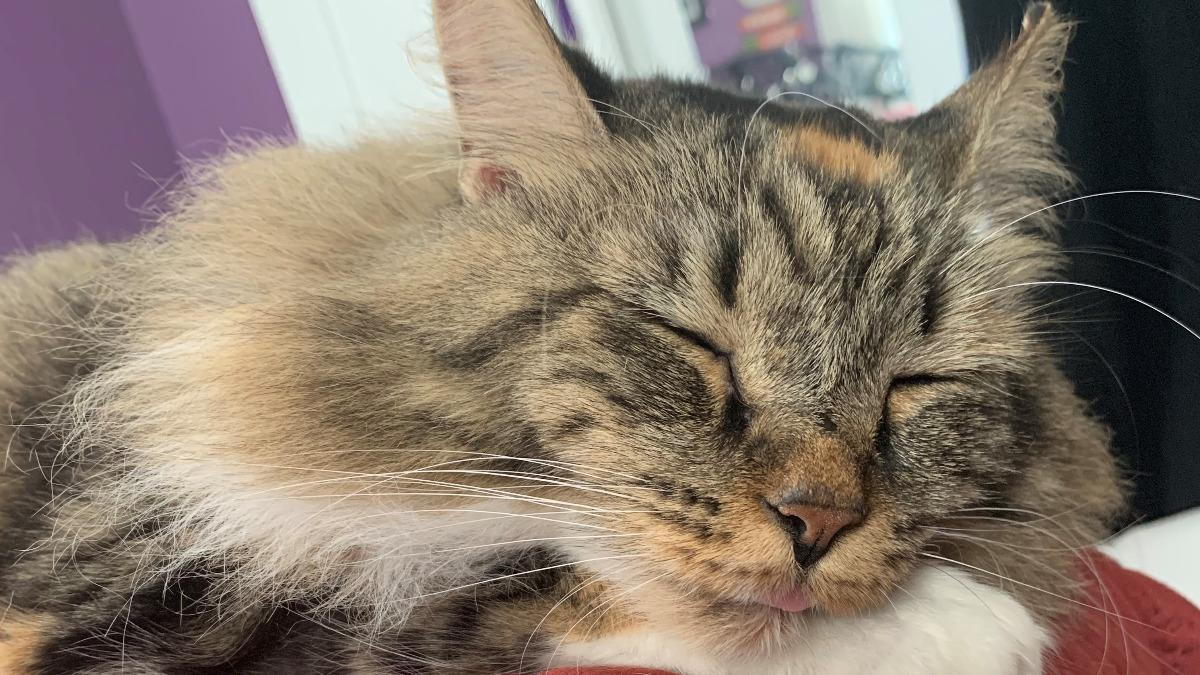Grooming Tips for Your Cat

- posted: Jun. 18, 2022
Grooming Tips for Your Cat
Cats are relatively self-sufficient pets and they keep themselves pretty clean, but cats do require some grooming from time to time, especially if they have long hair. Proper grooming can prevent matted fur, reduce hairballs and prevent conditions like ingrown toenails. And cats can also use a little help with their eyes, ears and teeth to stay healthy. Here are some tips for keeping your cat looking her best!
Brushing: Nearly all cats (except for hairless varieties, of course!) can benefit from being brushed. Start brushing your cat when he’s young to get him used to being groomed. A soft bristled brush or grooming mitt works well for short-haired cats. A comb or shedding brush may be more effective for long haired cats. Give your kitten treats and keep sessions short. Try to brush your cat 2-3 times a week. Brushing removes loose hair, dead skin and helps to stimulate circulation which improves the skin and coat. Regular brushing can also prevent tangles and matted fur which can be painful. If your cat does have mats in his coat, you may be able to gently brush or tease them out. However, if mats are large or cover most of the coat, having your cat shaved is the best way to get back to a healthy coat. It is not recommended to use scissors to remove mats as injury to the skin could occur.
Nail trims: Cats do a good job keeping their nails groomed and sharp, especially if they have appropriate scratching posts or pads to use. However, trimming your cat’s nails on a regular basis can prevent problems. Again, start young, sit with your cat on your lap in a comfortable area and gently press the toe to expose the nail, trim off only the clear tip. Reward your cat with affection or treats. Handle your cat’s paws so she is not frightened to have her paws touched or nails trimmed. On average, a cat’s nails should be trimmed every 4-6 weeks. If your cat’s nails are curled into the pads, you may need your veterinarian to trim them and kitty may need some pain medication or antibiotics.
Eye and Ear Care: Cats may occasionally need to have their eyes and ears cleaned. Gently wipe the eyes if clear or brown debris has collected at the corners of the eyes. If your cat is squinting, his eyes look red or there is a green or yellow discharge, have him seen by your veterinarian. You can also clean your cat’s ears. Use a commercial ear cleaning solution or a small amount of rubbing alcohol on a cotton ball and wipe out the inside of your cat’s ear. If the ear is red, has an odor or a large amount of dark wax or fluid that does not seem to disappear after cleaning the ear, your cat may have an ear infection and needs veterinary care.
Bathing: Most cats do not require routine bathing, but, if your cat does need a bath, make sure that she is on a non-slip surface, don’t submerge the cat in water and be sure to rinse thoroughly with cool water. Towel dry your cat afterwards and keep her somewhere warm until her coat is dry.
Brushing Your Cat’s Teeth: Brushing your cat’s teeth can be challenging but daily brushing is an ideal way to keep his or her teeth in the best shape. As with other grooming procedures, start when your cat is young. Have him lick a pet toothpaste from your finger first, then see if he will let you rub his teeth and gums with your finger. If your kitten tolerates this, try a finger brush or a toothbrush.
Making sure your cat is well groomed will help to keep him or her happy and healthy throughout his or her life. These simple tips can keep your kitty looking and feeling his best.
This blog brought to you by the Patton Veterinary Hospital serving Red Lion, York and the surrounding communities.
https://www.aspca.org/pet-care/cat-care/cat-grooming-tips
https://pets.webmd.com/cats/guide/cat-grooming
Location
Patton Veterinary Hospital
425 E Broadway
Red Lion, PA 17356
